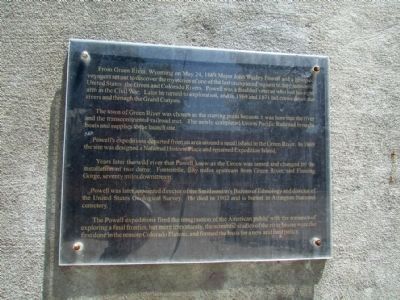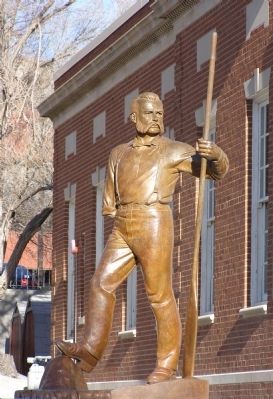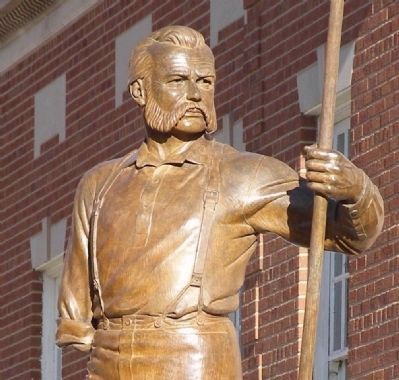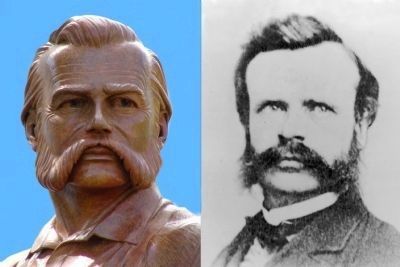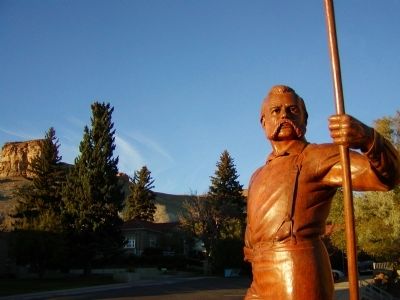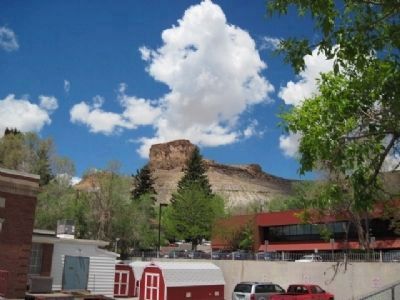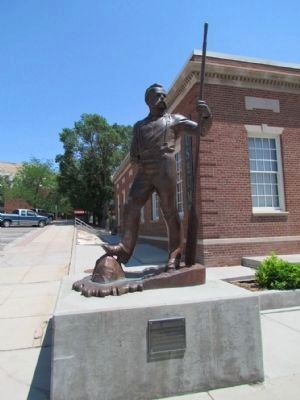Green River in Sweetwater County, Wyoming — The American West (Mountains)
John Wesley Powell
The town of Green River was chosen as the starting point because it was here that the river and the transcontinental railroad met. The newly completed Union Pacific Railroad brought boats and supplies to the launch site.
Powell's expeditions departed from an area around a small island in the Green River. In 1969 the site was designated a National Historic Place and renamed Expedition Island.
Years later the wild river that Powell knew as the Green was tamed and changed by the installation of two dams; Fontenelle, fifty miles upstream from Green River, and Flaming Gorge, seventy miles downstream.
Powell was later appointed director of the Smithsonian's Bureau of Ethnology and director of the United States Geological Survey. He died in 1902 and is buried in Arlington National Cemetery.
The Powell expeditions fired the imagination of the American public with the romance of exploring a final frontier, but more importantly, the scientific studies of the river basins were the first done in the remote Colorado Plateau, and formed the basis for a new arid land policy.
Erected 2003 by City of Green River in cooperation with the Sweetwater County Historical Museum.
Topics. This historical marker is listed in these topic lists: Cemeteries & Burial Sites • Exploration • Science & Medicine • War, US Civil • Waterways & Vessels. A significant historical month for this entry is May 1895.
Location. 41° 31.75′ N, 109° 28.035′ W. Marker is in Green River, Wyoming, in Sweetwater County. Marker is at the intersection of Flaming Gorge Way and North Center Street when traveling north on Flaming Gorge Way. Touch for map. Marker is at or near this postal address: 3 East Flaming Gorge Way, Green River WY 82935, United States of America. Touch for directions.
Other nearby markers. At least 8 other markers are within walking distance of this marker. Oregon Trail Memorial (within shouting distance of this marker); Green River Brewery (about 500 feet away, measured in a direct line); Trona Precursors (about 700 feet away); Riverside Swimming Pool (approx. 0.4 miles away); Green River City Hall - 1942-1954 (approx. 0.4 miles away); Julius Stone (approx. 0.4 miles away); The Paddlewheeler Comet - 1908
(approx. 0.4 miles away); Kolb Brothers (approx. 0.4 miles away). Touch for a list and map of all markers in Green River.
Regarding John Wesley Powell. John Wesley Powell led two (1869 and 1872) expeditions down the Green and Colorado Rivers, despite having lost his right arm in the Battle of Shiloh.
Both of the Powell Expeditions originated from the city of Green River, Wyoming. This sculpture by David Alan Clark depicts Powell gazing downstream. It is installed in front of the Sweetwater County Historical Museum, 3 E. Flaming Gorge Way in Green River, just off I-80.
Also see . . .
1. Wikipedia Entry. “The railroad companies, who owned vast tracts of lands granted in return for building the railways, did not agree with Powell’s views on land conservation. They aggressively lobbied Congress to reject Powell’s policy proposals and to encourage farming instead, as they wanted to cash in on their lands. The US Congress went along and developed legislation that encouraged pioneer settlement of the American West based on agricultural use of land. ... At an 1883 irrigation conference, Powell would prophetically remark: ‘Gentlemen, you are piling up a heritage of conflict and litigation over water rights, for there is not sufficient water to supply the land.’ Powell’s recommendations for development of the West were largely ignored until after the Dust Bowl of the 1920s and 1930s, resulting in untold suffering associated with pioneer subsistence farms that failed due to insufficient rain.” (Submitted on March 22, 2014.)
2. How the John Wesley Powell statue was made. The web page of the Artist, David Alan Clark. (Submitted on October 28, 2008.)
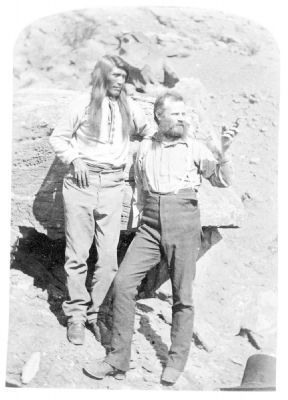
Photographed By Frederick Samuel Dellenbaugh (presumed), circa 1874
8. Portrait of J. W. Powell with Indian
Powell is shown with Tau-gu, a Pauiute. Photograph was most likely taken by explorer Frederick Samuel Dellenbaugh, a member of John Wesley Powell’s second Colorado River expedition. Courtesy Wikipedia Commons.
Credits. This page was last revised on December 28, 2019. It was originally submitted on October 27, 2008, by Mary Johnston-Clark of Lander, Wyoming. This page has been viewed 3,724 times since then and 54 times this year. Last updated on October 29, 2008, by Mary Johnston-Clark of Lander, Wyoming. It was the Marker of the Week March 23, 2014. Photos: 1. submitted on August 16, 2013, by Duane Hall of Abilene, Texas. 2, 3, 4, 5. submitted on October 27, 2008, by Mary Johnston-Clark of Lander, Wyoming. 6. submitted on June 6, 2011, by Bob (peach) Weber of Dewey, Arizona. 7. submitted on August 16, 2013, by Duane Hall of Abilene, Texas. 8. submitted on March 22, 2014, by J. J. Prats of Powell, Ohio. • Kevin W. was the editor who published this page.
